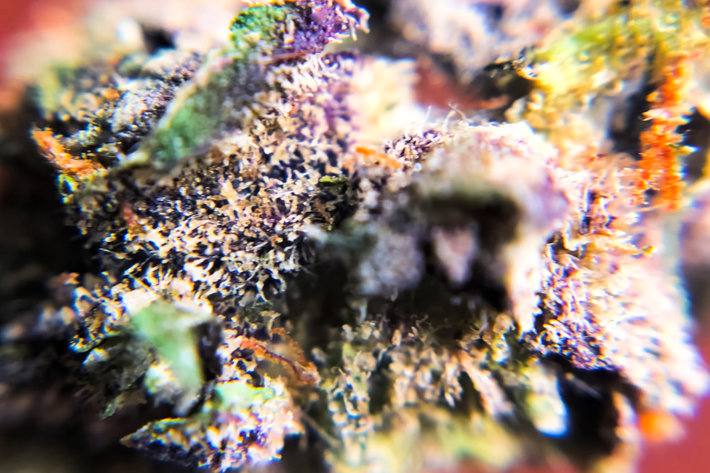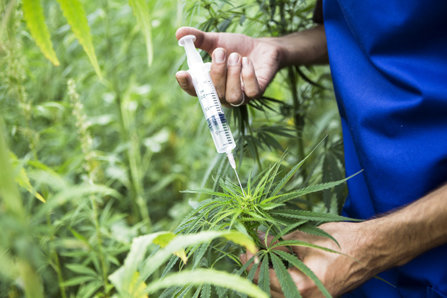Marijuana Legalization Efforts Mask Intentional Manipulation of Potency

Though marijuana has been in use in the United States for decades, today’s marijuana is not the same drug as the marijuana that rose to popularity during the second half of the 20th century. Unfortunately, many Americans born before the 1990s will probably not be aware of that. They grew up in the 1960s, 1970s, and 1980s, a period when marijuana use was prevalent, but a period when a different type of marijuana was being used.
The truth is, the marijuana that is used today is effectively a different drug than what was used half a century ago. It's essential that people get educated about the strains of marijuana that have risen in popularity, and what about them makes them different from previous strains.
Examining the Drug—How 21st Century Marijuana Differs from 20th Century Marijuana
According to the National Institute on Drug Abuse, marijuana is more potent than it used to be. Even as recently as the 1990s, the average THC in most marijuana samples was less than four percent. But by 2018, the average THC levels of most marijuana samples came in at more than 15 percent, a more than tripling in potency.
It's important to keep in mind that the 15 percent potency number is just a rough estimate. Some marijuana products, especially marijuana that has been chemically altered or specially extracted, are even more potent, with some extracts such as marijuana "dabs" or waxes reaching as much as 80 percent potency.
This highlights a growing concern that not only is the marijuana plant of today being cultivated with increasingly more THC, but marijuana extracts, synthetics, resins, waxes, and other products are being synthesized that are far more potent than ordinary marijuana plants.
Another point of concern is the growing popularity of edibles. These are baked foods that have marijuana leaves or resins baked into them. When people consume edibles, they usually won't experience the mind-altering effects for many minutes. That may cause them to take more of the drug than initially intended, which could lead to an overdose (getting physically sick, becoming extremely disoriented, etc.).
An Increase in Risk Factors—Potential Harm from Marijuana Use

It does not take much speculation to imagine the effect on users if the drug they are taking becomes progressively more potent as time passes. Quoting Elizabeth Stuyt, a medical doctor and addiction specialist:
"Many people who have voted for legalization thought they were talking about the marijuana of the 1960s to 1980s when the THC content was less than 2%. However, without any clear guidelines or regulations from government officials, the cannabis industry has taken a page from the tobacco and alcohol industries' play book and developed strains of marijuana and concentrated marijuana products with much higher concentrations of THC, the psychoactive component that causes addiction. The more potent a drug is, the stronger the possibility of addiction and the more likely the person will continue to purchase and use the product."
There is no doubt that as marijuana potency increases, risk factors in its use will also increase. In the short term, marijuana can affect the brain within about 30 minutes to an hour after use. Effects can include an altered sense of time, mood changes, impaired coordination, difficulty thinking, memory challenges, hallucinations, delusions, psychosis, and cognitive reduction.
Marijuana use also has harmful long term effects. When someone uses marijuana, the drug:
- reduces IQ,
- harms brain development,
- impairs thinking,
- causes permanent memory loss,
- and increases stroke risk.
People who use marijuana for extended periods may also experience:
- social challenges,
- difficulty holding a job,
- financial problems,
- relationship and family struggles, etc.
Addiction Treatment—What to Do When One Cannot Stop Using Marijuana
After alcohol, marijuana is the most commonly used drug in the United States. According to the National Institute on Drug Abuse, about 11.8 million young adults reported using marijuana in the past year. It's use is extremely prevalent, and it's growing.
Marijuana use is becoming more critically harmful too. Of that, there is no question. Again referencing the NIDA report, in 2011, about 456,000 emergency room visits involved a patient who had been using marijuana. That represented a 13 percent increase from 2009's ER visits. As states continue to legalize marijuana, ER visits connected to the drug will undoubtedly increase.
It's time for Americans to do away with any preconceived notion they may have held that marijuana is in any way a "harmless" drug. It is not. It is harmful, and it is becoming more destructive as the years pass. Though marijuana has not historically been seen as addictive, its current potency does create the possibility for addiction. If you know someone who is using marijuana and who cannot stop using it, they need to get help. They need to get off the drug as soon as possible.
The way to help an addicted loved one to the best of your abilities will be to assist them in entering a drug and alcohol rehab program. Narconon provides a time-tested and comprehensive program proven to be successful by the thousands of people living drug and alcohol-free lives as a result of attending Narconon. Please do not wait until your family member's condition worsens. Call Narconon today.
Sources:
- https://teens.drugabuse.gov/blog/post/myth-or-fact-marijuana-stronger-these-days
- https://www.ncbi.nlm.nih.gov/pmc/articles/PMC6312155/
- https://www.drugabuse.gov/publications/research-reports/marijuana/what-scope-marijuana-use-in-united-states


 ®
®